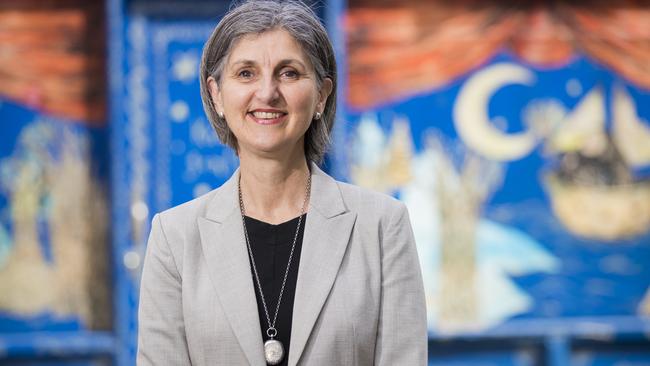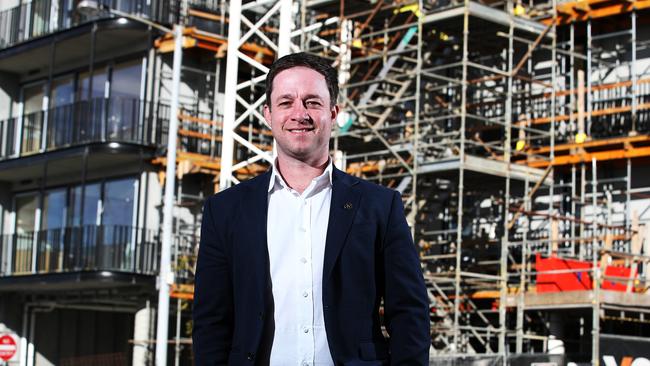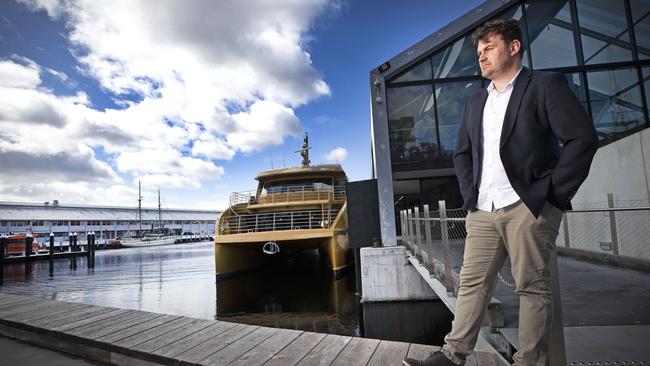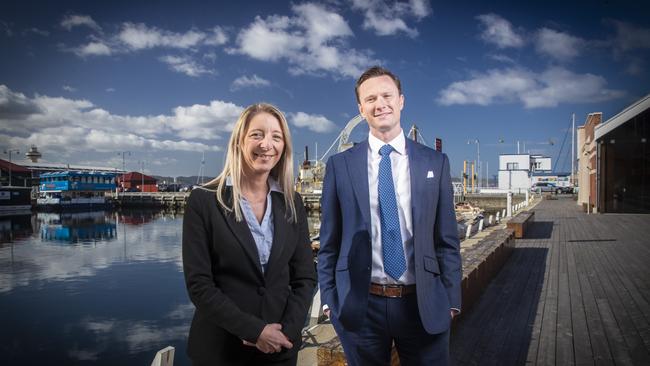Social services, tourism, construction and motoring groups make their state budget pitch
From caring for Tasmanians to creating jobs to tourism, key industry bodies have outlined what they think Tasmania needs to recover from the COVID-19 pandemic in their state budget wishlists. SEE THE BIG LIST >>
Tasmania
Don't miss out on the headlines from Tasmania. Followed categories will be added to My News.
- Travel vouchers: Top deals and your questions answered
- Tourism industry launches plan for COVID rebound
IMPROVING the health of Tasmanians, getting a move on with major infrastructure projects and giving building a boost are among the big ticket items on the state budget wishlists of lobby groups.
With the state budget deferred until November 12, stakeholders were invited to revise their budget submissions to reflect the changing needs of their sectors in light of the coronavirus pandemic.
SEE WHAT EACH INDUSTRY BODY HAS ASKED FOR BELOW >>
The Tasmanian Council of Social Service has taken the somewhat unusual approach of advocating for investment in an area not directly under its umbrella.
TasCOSS CEO Adrienne Picone said the organisation has focused its submission on health, because Tasmanians on low incomes were disproportionately represented in hospital admissions.
“We continue to apply the same solutions over and over to our hospital system when it is clear that it is not working to improve outcomes,” Ms Picone said.
“The fact is the solutions to our overburdened hospital system will not be found in our hospitals.
The lack of affordable and available GPs is at the heart of the need many Tasmanians talk to us about and the impact of this is evident in health data such as: The median age of death in Tasmania’s most disadvantaged neighbourhood is 66 years, compared to 84 years in the state’s most advantaged neighbourhood.”
RACT chief member experience officer Stacey Pennicott said continued and considered investment in roads and transport should be an absolute priority for government as it worked to help the economy recover from the pandemic.
“The most important priority is continuing to deliver infrastructure and policies that keep Tasmanians and visitors safe on our roads. To achieve this not only are we calling for a number of specific roads to be improved, we are calling for all Tasmanian roads to be upgraded to at least a 3-star AusRAP rating which will require significant investment,” Ms Pennicott said.
INDUSTRY’S WISHLIST FOR STATE BUDGET
TASCOSS

The Tasmanian Council of Social Service’s concerns the poor health of people on low incomes prompted a budget submission focused on preventing hospitalisations.
Data presented by TasCOSS on emergency department admissions in Tasmania suggests people from disadvantaged areas present at EDs at five times the rate of people from advantaged communities.
TasCOSS estimates Tasmania is missing out on around $38.5 million in Commonwealth health funding due to a lack of chronic disease care plans that Tasmanians are entitled to but don’t have, often because they cannot access a GP or an allied health team.
TasCOSS’s solutions include:
- Lobbying the federal government to “cash out” Tasmania’s chronic care management allocation based on the state’s population health profile.
- Give GPs access to publicly funded allied and community health providers to ensure proper care planning.
- Service hubs or mobile care teams to provide primary, dental, mental health, allied health and social care, as well as some elements of acute hospital care such as specialist care.
A second TasCOSS priorities statement which focuses on the social service’s workforce says the sector, which currently employs 10,000 people, can be part of the solution to the coronavirus jobs slump.
TasCOSS is requesting $600,000 for an industry plan and workforce development strategy.
MASTER BUILDERS TASMANIA

The sector’s main priority is addressing the immediate gap in the major construction pipeline following a “collapse” in private sector investment.
The state’s construction industry employs 20,000 people with MBT estimating the industry contributed $2.5 billion to the state’s economy in 2019.
MBT says land availability has become the biggest constraint on the sector.
The submission calls for the following steps to stimulate construction:
- The state government to immediately amend Hobart’s urban growth boundary, which has recently forced councils to reject proposed subdivisions due to zoning constraints.
- Fund asbestos removal projects under the National Asbestos Exposure Register for both public and privately owned buildings
- Work with developers to progress projects postponed due to COVID — 19
- Bring forward maintenance and infrastructure investment for state owned companies
- Provide no interest loans for headworks on new subdivisions.
- Modifying government procurement rules to make it easier for small and medium sized local firms to secure government contracts.
TOURISM INDUSTRY COUNCIL TASMANIA

The industry worst hit by the coronavirus pandemic has developed an action plan in conjunction with the state government.
However the plan was launched just days before Premier Peter Gutwein shocked the industry by scrapping proposed travel bubbles with COVID-free states and closing borders until December 1.
The sector has not submitted a separate state budget submission, rather offering the action plan as a way forward.
The plan calls for focused marketing for reopening, strategic investment in the state’s iconic natural areas and supporting the restarting of events.
It includes spending priorities that have already been put in motion, including the Come Down for Air domestic marketing campaign.
Investment priorities include the progression of upgrades at Cradle Mountain and Freycinet National Park and the completion of the Three Capes Track.
The plan acknowledges restoring air access to the state “will not be easy” but will be critical to the recovery of the industry.
The plan endorsed by the government pledges to create a direct international air link with New Zealand and add additional sailings of the Spirit of Tasmania ferries.
The plan says Aboriginal tourism operators will be supported to establish and operate cultural tourism enterprises on country.
RACT

The RACT says its budget submission provides a road map to Government for safer, more efficient and more sustainable transport options for Tasmanians.
The peak body for motorists named several road funding priorities:
- The Bass Highway 10 Year Plan.
- Greater Hobart Mobility Vision, which includes traffic congestion solutions such as increased public transport, ferries, park and ride facilities.
- The Launceston and Tamar Valley Traffic Vision, including the future Tamar Bridge, West Tamar Highway improvements and long term congestion improvements.
The tourist roads in most need of attention are Wielangta Road, the Arthur Highway, roads on Bruny Island and the Stanley Highway
The Bridgewater Bridge replacement and South East Traffic Solution are the RACT’s most wanted major infrastructure projects.
Roads in most in need of safety upgrades are Huon Highway/Sandfly junction and Channel Highway at Howden
The RACT’s priorities around sustainable transport are increased investment in electric vehicle charging, a trial of autonomous vehicle technology and investment in separated cycleways.
COLONY 47
The housing and youth services organisation is not seeking additional funding for housing, but wants the government to create a specialist portfolio of housing stock that is safe, secure and fit for purpose for young people.
Colony 47 says young people also make up 25-30 per cent of the social housing register waiting list.
The submission suggests allocating a proportion of the current Affordable Housing Action Plan funding to housing suitable for young people.
Colony 47 says young Tasmanians are experiencing higher levels of underemployment and unemployment compared to the general population, particularly as a result of the coronavirus pandemic.
CIVIL CONTRACTORS FEDERATION
The peak body for civil and engineering construction is calling on the state government to deliver on previously committed levels of infrastructure spending, saying the industry is playing catch-up.
The Federation says the industry does not have enough access to training and skills development.
The government is being urged to provide better training facilities for the sector and more hands on, on-site training and access to equipment.
Along with the Master Builders the CCF wants quarterly construction roundtables to resume.
A series of roundtables held in 2018 were seen as an effective way for the private and public sectors to discuss the rollout of infrastructure projects.


